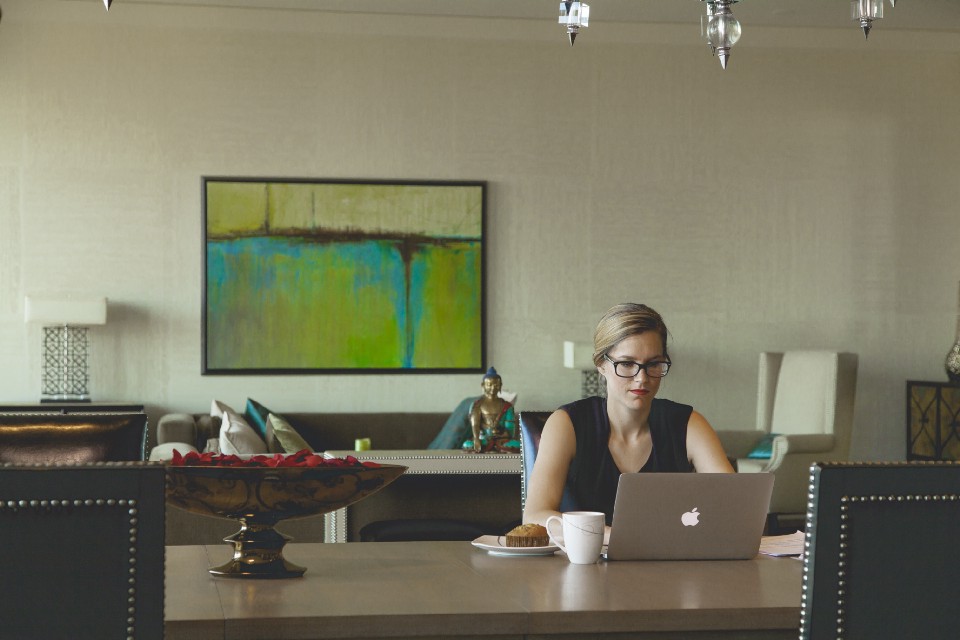There is an underlying aspect of gender in how new technologies will affect employment. Fortune predicts that women will experience higher job loss because they hold disproportionately more jobs that are at risk of automatization. Women are also under-represented in fields that are becoming increasingly relevant in the knowledge economy, such as engineering and computer science. These macro trends make us wary about the future of women employment.
However, the future is not all gloomy because it also enables women to be more in control of their work via new methods of working, such as freelancing. Freelancing is a new method that allows people to work for various clients at the same time and more often than not, work off site with flexible hours. Today, more than half of freelancers are female.
So why do so many women choose freelancing over traditional alternatives? Sarah Horowitz, the founder of the Freelancers’ Union, argues that freelancing is a new form of work that remedies the constraints that women face in a traditional workplace.
McKinsey reports that more women than men indicate flexibility as one of their main motivations to freelance. Such model of work accommodates women who simply cannot make the 9 to 5 schedule fit with the duty of taking care of their family. Which are still disproportionately placed upon the shoulders of the women.

Women are about four times more likely to do all or most of the housework and the burden increases if there are children. Surprisingly, this stands true even if the woman is the primary-bread winner, suggesting that despite the progress made by women in the workforce, social norms still bind women to house duties.
Many argue that freelancing is the key to the puzzle of work-family balance for women. It allows women who choose to have children to also choose to work because it offers them the choice of the “when” and “where”. Whereas non-freelancing women often have to choose between their jobs and families, which further marginalizes them from the workforce.
Turns out, freelance work also has the effect of tackling the glass ceiling and allowing women to advance further in their careers. Despite the good intentions of many companies to actively include women in top executive positions, and Sandy Sandberg’s Lean In flying off the shelves, the prospects of career advancement looks grim in traditional corporations.
McKinsey reported that starting from the entry level position gender discrepancy is prevalent, and one may even say “rampant” amongst the top executive positions where women compose of a meagre 19% of “C-Suite” positions. The reason behind this is an intersection of centuries of gender discrimination, which shackles many women with every leap they take in their careers. Dealing with subtle and sometimes not-so-subtle sexist remarks and sexual harassment, all at the same while trying to outperform their male counterparts contributes as a large motivation for women to freelance as they are able to work on an equal platform.
The idea of freelance has turned the power structure of work on its head and women are better able to advance in their careers as freelancers without the constraints of traditional work dynamics. Freelancing women are their own bosses and are able to be evaluated and advance their careers based on their talent as the nature of freelance work allows women to work off-site and therefore do not face the day-to-day challenges of being a woman in a traditional work space.
“I have the power to work with the people I want to work with, in the way I want to work with them, and not to put up with some of the constraints that are so entrenched in traditional workplaces.”
— Ngaio Parr (female freelancer)
What women can achieve when they are not anchored down by sexism in the workplace is a breath of fresh air, Forbes states freelancing women out-earning their male counterparts by as much as 16%, a remarkable figure taking into considering that in traditional settings, women on average earn 17% less than men in America. Freelancing women have also developed formidable networks such as “Make Nice” which is an online community of women created in efforts to support and mentor each other as freelancing could be an isolating career with little guidance.
So, freelancing seems to provide an alternative choice for women in terms of more flexible work with better opportunities for career advancement. Yet, freelancing is not a perfect option. There still remain the issues of social benefit and maternity leave to be addressed. However, freelancing is a welcome opportunity for ambitious women who wish to take their careers into their own hands, and nevertheless persist despite constraints.
Source:
OECD Social, Employment and Migration Working Papers, http://www.oecd.org/officialdocuments/publicdisplaydocumentpdf/?cote=DELSA/ELSA/WD/SEM(2011)1&doclanguage=en


